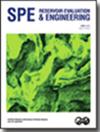利用电相、地震相和地震属性对伊朗某油田Sarvak油藏孔隙度进行地质统计建模的最佳方案
IF 1.5
4区 工程技术
Q3 ENERGY & FUELS
引用次数: 0
摘要
在非均质储层中,孔隙度的横向和纵向变化显著影响储层质量和体积计算。本文以Dezful embayar的伊朗Zagros盆地Sarvak油藏为例,旨在展示一种有效的孔隙度分布方法。采用不同地统计学算法的4种相模型(基于电相分析数据和地震相),考察了不同相类型对孔隙度扩展的影响。采用确定性和随机两种方法验证了静态模型中地质统计算法对孔隙度建模的影响。总共运行了40个场景,并通过盲测试程序验证了孔隙度分布,以检查模型的可靠性。研究结果表明,与地震相相关的所有孔隙度盲测数据具有很高的相关性,相关性范围为0.778 ~ 0.876。此外,对声阻抗(AI)的共克里格作为次要变量,在所有相关情况下都增加了相关系数。与确定性算法不同,使用随机方法可以减少不确定性,并使孔隙度模型与原始数据具有相同的直方图。在考虑电相和地震相,并应用不同的地质统计算法的情况下,介绍了所研究的Sarvak碳酸盐岩储层孔隙度分布的综合工作流程。因此,在此工作流程的基础上,将孔隙度分布与地震相联系起来,将协同克里格与人工智能结合起来,并应用序贯高斯模拟(SGS)算法,可以获得最佳的孔隙度空间模型。本文章由计算机程序翻译,如有差异,请以英文原文为准。
The Best Scenario for Geostatistical Modeling of Porosity in the Sarvak Reservoir in an Iranian Oil Field, Using Electrofacies, Seismic Facies, and Seismic Attributes
The lateral and vertical variations in porosity significantly impact the reservoir quality and the volumetric calculations in heterogeneous reservoirs. With a case study from Iran’s Zagros Basin Sarvak reservoir in the Dezful Embayment, this paper aims to demonstrate an efficient methodology for distributing porosity. Four facies models (based on electrofacies analysis data and seismic facies) with different geostatistical algorithms were used to examine the effect of different facies types on porosity propagation. Both deterministic and stochastic methods are adopted to check the impact of geostatistical algorithms on porosity modeling in the static model. A total of 40 scenarios were run and validated for porosity distribution through a blind test procedure to check the reliability of the models. The study’s findings revealed high correlation values in the blind test data for all porosity realizations linked to seismic facies, ranging from 0.778 to 0.876. In addition, co-kriging to acoustic impedance (AI), as a secondary variable, increases the correlation coefficient in all related cases. Unlike deterministic algorithms, using stochastic methods reduces the uncertainty and causes the porosity model to have an identical histogram compared with the original data. This study introduced a comprehensive workflow for porosity distribution in the studied carbonate Sarvak reservoir, considering the electrofacies, and seismic facies, and applying different geostatistical algorithms. As a result, based on this workflow, simultaneously linking the porosity distribution to seismic facies, co-kriging to AI, and applying the sequential Gaussian simulation (SGS) algorithm result in the best spatial modeling of porosity.
求助全文
通过发布文献求助,成功后即可免费获取论文全文。
去求助
来源期刊
CiteScore
5.30
自引率
0.00%
发文量
68
审稿时长
12 months
期刊介绍:
Covers the application of a wide range of topics, including reservoir characterization, geology and geophysics, core analysis, well logging, well testing, reservoir management, enhanced oil recovery, fluid mechanics, performance prediction, reservoir simulation, digital energy, uncertainty/risk assessment, information management, resource and reserve evaluation, portfolio/asset management, project valuation, and petroleum economics.

 求助内容:
求助内容: 应助结果提醒方式:
应助结果提醒方式:


